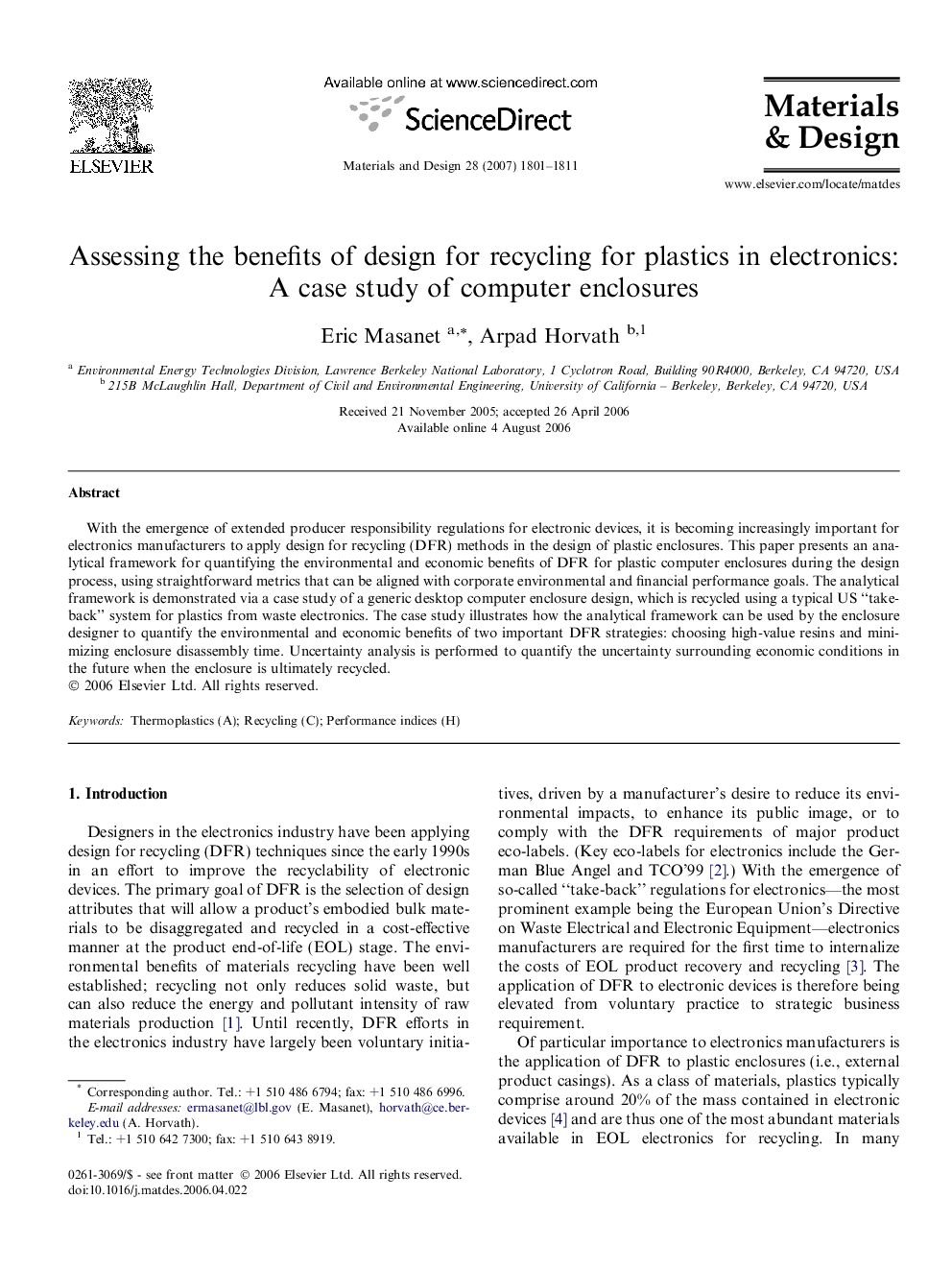| Article ID | Journal | Published Year | Pages | File Type |
|---|---|---|---|---|
| 833619 | Materials & Design (1980-2015) | 2007 | 11 Pages |
With the emergence of extended producer responsibility regulations for electronic devices, it is becoming increasingly important for electronics manufacturers to apply design for recycling (DFR) methods in the design of plastic enclosures. This paper presents an analytical framework for quantifying the environmental and economic benefits of DFR for plastic computer enclosures during the design process, using straightforward metrics that can be aligned with corporate environmental and financial performance goals. The analytical framework is demonstrated via a case study of a generic desktop computer enclosure design, which is recycled using a typical US “take-back” system for plastics from waste electronics. The case study illustrates how the analytical framework can be used by the enclosure designer to quantify the environmental and economic benefits of two important DFR strategies: choosing high-value resins and minimizing enclosure disassembly time. Uncertainty analysis is performed to quantify the uncertainty surrounding economic conditions in the future when the enclosure is ultimately recycled.
